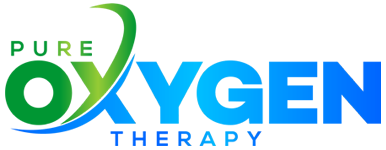Cupping
Hijama helps treat various illnesses and has been used for century’s in Arabian and Chinese cultures among others.
How it works
Hijama, also known as wet cupping therapy, is a method in which your blood is drawn toward the skin through a vacuum. The therapist puts cups having vacuum pressure inside them over your skin, and it draws blood toward the surface. Incisions are made on the skin removing toxins and impurities from nearby tissues.
Hijama Benefits
Increases red blood cells (RBCs)
Hijama therapy is believed to stimulate the production of red blood cells, contributing to improved oxygen transport and overall vitality.
Rids the body of toxins and excess fluids
Through the process of controlled suction, Hijama helps eliminate toxins and excess fluids, aiding the body’s natural detoxification processes.
Promotes the flow of blood to muscles and tissues
Hijama’s cupping technique encourages enhanced blood circulation, delivering essential nutrients and oxygen to muscles and tissues.
Regulates cholesterol level
Hijama therapy’s potential impact on cholesterol regulation could offer a holistic approach to managing cholesterol levels.
Controls high-blood pressure
With its potential to improve blood circulation and relaxation, Hijama might provide support in managing high blood pressure.
Stimulates the nervous system
The therapy’s effects on blood flow and nerve endings could lead to nervous system stimulation and potential stress reduction.
Beneficial for diabetic patients
Hijama’s reported blood-sugar reducing effects could hold promise as a complementary option for diabetic patients seeking blood sugar management.
What conditions can Hijama treat?
A common hijama benefit is that it can help treat various health conditions. But until now, there is not much research about it. According to researchers, it may be beneficial for patients to receive other treatments and medications, along with hijama.
Hijama alone can not be a treatment for any health condition. It can be beneficial in the treatment of conditions, such as:
- Varicose vein
- Anxiety
- Migraine
- Back pain
- Cervical pain
- Depression
- Acne
- Facial paralysis
- Herpes zoster
- Cervical spondylosis
- Respiratory tract diseases such as asthma, dyspnea, and allergies
Cough - Fibromyalgia
- Arthritis
- Gynaecological disorders
- Fertility issues
- Hypertension or high blood pressure
- Blood diseases such as anaemia and haemophilia
There is not much research done about hijama on these health conditions. Hijama can help in treating them, but it should not be the first option to avail. If you are not feeling well due to any health condition, you must consult with a physician as soon as possible.
Moreover, you should take the medicines as prescribed. Do not take hijama as a substitute for medicines and the advice of the doctor. If you do that, your health conditions can worsen. You can do hijama along with medical treatment. So, you recover soon.
Who can get the hijama done?
The experts do not recommend cupping for all populations. Therefore, for some, it is better to avoid or do it with extreme caution. That sensitive population includes;
- Children under 4 years of age
- Old aged people
- Women who are having periods currently
- Pregnant women- should not receive cupping, especially at the abdomen and lower back.
All these people should avoid getting hijama. It should only be done if your healthcare provider allows it and the benefit is more than the associated risk.
You must also avoid getting hijama therapy if:
- You are on blood thinners.
- You have got a wound on your skin.
- You have got a skin ulcer.
- You have experienced any kind of recent trauma.
- You have a disorder of the internal organs.
Services
Contact
845D High Road, North Finchley, London, N12 8PT
Subscribe
